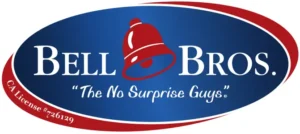![]() Tax season has come and gone, and most of us could have used a few more breaks. Most folks are familiar with deductibles that arise from dependents and other expenses. A lot of people are also aware that you can get tax breaks from business expenses. But a lot of people don’t realize there’s a slew of other stuff you can deduct from their taxes owed every year, and energy efficient upgrades are a great way to get money back when you file taxes. This post is going to cover a few of those things you can do this year that will help next April when you file your taxes.
Tax season has come and gone, and most of us could have used a few more breaks. Most folks are familiar with deductibles that arise from dependents and other expenses. A lot of people are also aware that you can get tax breaks from business expenses. But a lot of people don’t realize there’s a slew of other stuff you can deduct from their taxes owed every year, and energy efficient upgrades are a great way to get money back when you file taxes. This post is going to cover a few of those things you can do this year that will help next April when you file your taxes.
How Do Credits Work?
Similar to rebates, tax credits are money the government will pay you (or allow you to deduct from your taxes) for increasing the energy efficiency of your home. If you install a heat pump in 2016, the government will give you a $300 tax credit when you file next April. That means they either take 300 bucks off the taxes you owe them, or they add 300 bucks to the money they owe you. All around, it can be a pretty great deal come tax season.
Home Upgrade Credits
By far, the majority of tax credits apply to home upgrades. There are two different ways the government figures out how much it will pay for a project. Certain projects, like a heat pump installation, have a flat tax credit. If you install a heat pump, you get 300 bucks. Doesn’t matter how expensive or cheap the pump is: as long as it meets their standards for energy efficiency, they’ll pay you the flat 300 dollars.
The other method is by percentage. Some projects, like door replacement, are harder for the government to assess. Depending on the house, door replacement could mean one door or ten. Instead of having a flat fee like with a piece of equipment, the government instead says, “We’ll cover 10% of the door replacement costs up to $500. So if you’re a homeowner and you spend $1,000 on a door replacement, they’ll give you 100 bucks back. If you spend $5,000, they’ll give you 500 bucks back. But that’s the limit: if you spend more than five grand on doors, you’re still only going to get 500 dollars in tax credits.
Who Should Consider Tax Credits?
Anybody who wants the credit can probably get it by upgrading their home; that said, tax credits alone are not a good reason for upgrading your home. As mentioned above, tax credits have a cap of $500 total for all home upgrades, and you may only be able to get tax credits once.
But as you probably know, there are a lot of great reasons for upgrading your home’s energy efficiency, and if you’re already considering doing so this year you should be aware of the benefit tax credits offer. In addition to lowering your utility bill, increasing your home’s comfort, and extending the life of your HVAC system, energy-efficiency upgrades can also bring in some very nice tax credits that make it easier for you next April. That’s especially true if you’re thinking about solar power for your home. Unlike other upgrade credits, the government will give you a 30% credit with no upper cap if you purchase solar panels. That’s $300 back for every $1,000 you spend, which isn’t too bad.
Tax credits can be a little tricky to finagle, and they vary based on the project. That’s why it’s important to work with a qualified contractor who’s familiar with home performance upgrades and who will help you make a plan, perform the work, and collect your credits. At Bell Brothers we pride ourselves on helping clients cut through the red tape of financing, rebates, and tax credits so they can get the home performance they need at a price they can afford.
